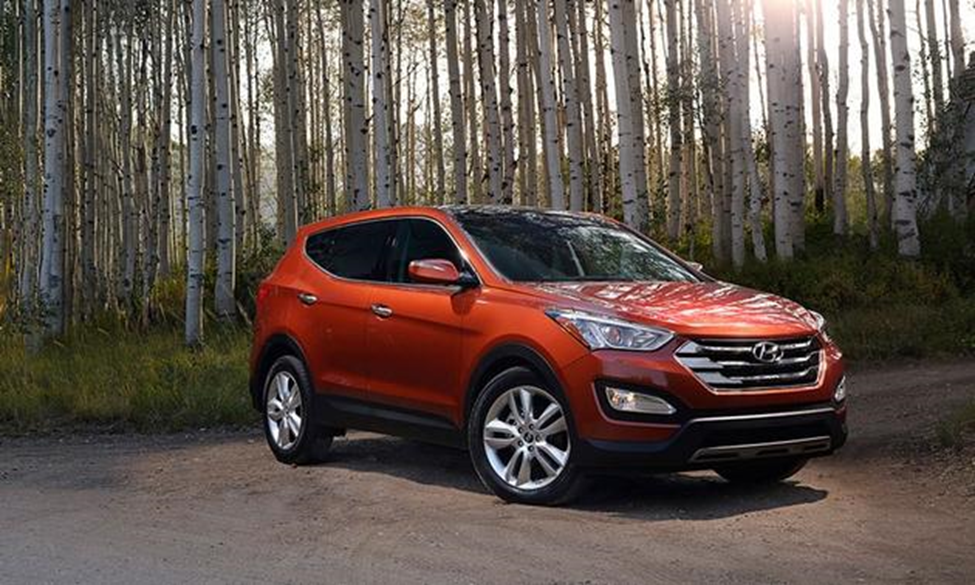The five-passenger Sport sits on the same 106.3-inch wheelbase as the outgoing 2012 Santa Fe. At 184.6 inches in length, it’s 6.5 inches longer than the 2013 Ford Escape (on a wheelbase that’s only fractionally longer), and roughly as long and wide as compact SUVs such as the Ford Edge and Chevrolet Equinox, with comparable interior volume.
The most obvious change in the Santa Fe Sport is substantial weight reduction. Hyundai uses 30 percent more high-tensile steel in the unitized body/frame, lighter seat frames and interior trim and lighter suspension bits, among other things. Even with additional safety equipment (starting with an extra airbag) and 38 pounds more sound-managing material, the Santa Fe Sport weighs 266 pounds less than the 2012 Santa Fe and 33 pounds less than the smaller Ford Escape. Yet, Hyundai claims a 16 percent improvement in torsional stiffness.
The Sport’s base engine is a direct-injected, 2.4-liter inline four. With 190 hp and 181 lb-ft of torque, it gives this Hyundai the best base power-to-weight ratio in the class. The bottom line is 17 ponies more than the heavier ’12 Santa Fe and a 3-mpg improvement in combined mileage, according to the EPA.
The upgraded engine is Hyundai’s 2.0-liter direct-injection turbo four, featuring a twin-scroll turbocharger built into the exhaust manifold. It generates 264 hp and 269 lb-ft, and the turbo’s extra zing reduces EPA combined mileage by just 1 mpg. The standard six-speed torque-converter automatic is now built in-house by Hyundai rather than sourced from an outside supplier. The optional all-wheel-drive system, available with both engines, is supplied by Magna. It uses a multiplate clutch coupling to split power between the front and rear differentials.
The Santa Fe Sport comes standard with seven airbags, including a driver’s knee bag and a range of electronic driving aids, starting with Active Corner control, Hillstart assist and Downhill brake control. At $25,275 (including an $825 destination charge), the base model comes well equipped, with projector beam headlights, six-speaker audio, Bluetooth connectivity, reclining rear seats and 17-inch alloy wheels. Further up the food chain, the Sport offers full-grain leather upholstery, heated rear seats, Infinity-branded audio, a cooled glovebox, wiper de-icer, rear side-window sunshades and polished 19-inch wheels. Sometime in early 2013, Hyundai will introduce a seven-passenger, long-wheelbase Santa Fe, powered by a 290-hp, 3.3-liter direct-injection V6. As with the Sport, development focused on trimming weight from the platform. The base seven-passenger Santa Fe weighs 397 pounds less than the current Veracruz, which will disappear from Hyundai’s lineup with introduction of the Santa Fe LWB.
Hyundai’s product team repeatedly highlighted-almost bragged about-its decision to introduce the Santa Fe Sport in Utah’s Wasatch Mountains, starting 8,400 feet above sea level. We repeatedly wondered why, in its boldness, Hyundai did not offer the base normally aspirated engine for evaluation.
Generally, the Santa Fe Sport delivers a fine compromise of good ride and steady response-neither chop nor wallow. Dynamically, it motors in similar fashion to the new Ford Escape, with more interior volume: light, spry and balanced. The brake pedal feels firm enough and linear, and Hyundai claims the largest brakes and shortest stopping distances in the class.



